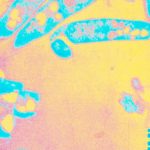Link to Pubmed [PMID] – 37368670
Link to HAL – pasteur-04376976
Link to DOI – 10.3390/toxins15060369
Toxins (Basel) 2023 May; 15(6):
“Recognizing a surprising fact is the first step towards discovery.” This famous quote from Louis Pasteur is particularly appropriate to describe what led us to study mycolactone, a lipid toxin produced by the human pathogen Mycobacterium ulcerans. M. ulcerans is the causative agent of Buruli ulcer, a neglected tropical disease manifesting as chronic, necrotic skin lesions with a “surprising” lack of inflammation and pain. Decades after its first description, mycolactone has become much more than a mycobacterial toxin. This uniquely potent inhibitor of the mammalian translocon (Sec61) helped reveal the central importance of Sec61 activity for immune cell functions, the spread of viral particles and, unexpectedly, the viability of certain cancer cells. We report in this review the main discoveries that marked our research into mycolactone, and the medical perspectives they opened up. The story of mycolactone is not over and the applications of Sec61 inhibition may go well beyond immunomodulation, viral infections, and oncology.

